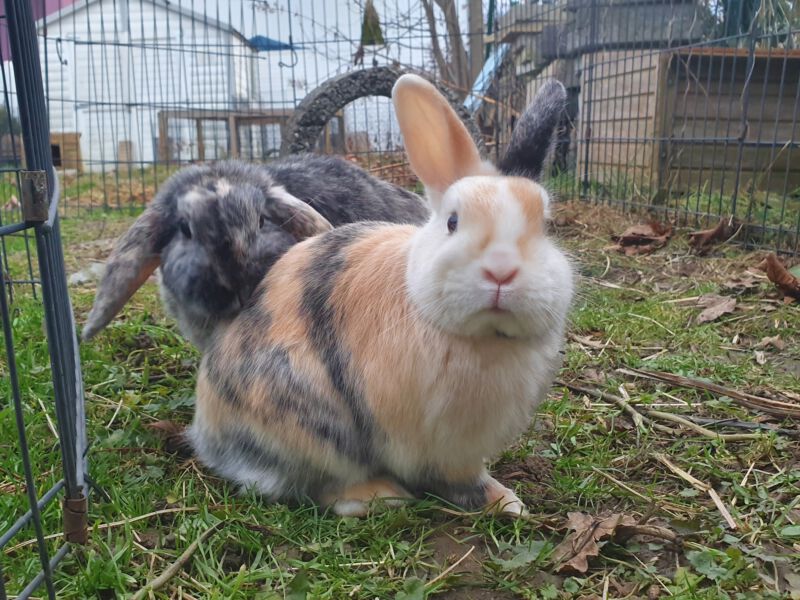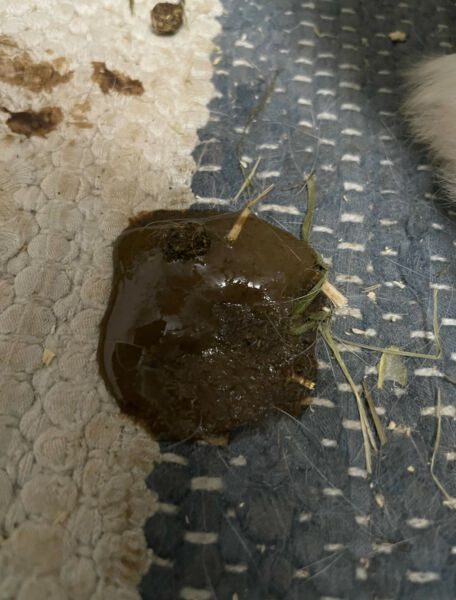Contents
Rodentiosis / Pseudotuberculosis / Nagerpest / Nager-Tuberkulose
The disease you’re referring to is caused by Yersinia pseudotuberculosis. It is important to avoid using the term „Pseudotuberculosis“ because it can be confused with pseudotuberculosis in sheep and goats (Corynebacterium pseudotuberculosis), which is a different disease. The term „Nager-Tuberkulose“ (rodent tuberculosis) is also not ideal, as the causative agent is not a mycobacterium.

Causes and Transmission
- The most common way rabbits become infected with Yersinia pseudotuberculosis is by ingesting contaminated food, such as vegetables, hay, or grass that has come into contact with infected feces. Water that has been contaminated by the pathogen (e.g., through wild birds at a birdbath that the rabbits have access to) is another possible source of infection.
- Moist habitats can serve as a reservoir for the bacteria, where the rabbits can become infected when they come into contact with contaminated areas. Even seemingly healthy rabbits purchased from other sources can carry the bacteria and introduce it into the environment.
- Once the pathogen is introduced, rabbits can transmit the infection to each other.
- An immunocompromised state, such as that caused by stress, intestinal parasites, another illness, or poor nutrition, increases the likelihood of an outbreak if the rabbits have already been exposed to the bacteria.
Can Other Animals or Humans Become Infected?
Yes, the pathogen Yersinia pseudotuberculosis is transmissible to other animal species and can also affect humans, making it a zoonotic disease. In addition to rabbits, animals such as rodents, lagomorphs, hares, dogs, wild birds, and wild mammals (e.g., foxes, deer) can exhibit symptoms of the disease. The transmission occurs primarily through feces from infected animals.
Incubation Period
The incubation period for Yersinia pseudotuberculosis is typically five to ten days.
Environmental Stability
The bacterium is relatively resistant to environmental conditions and can proliferate in water or moist environments at temperatures around 18-20°C. It can also remain infectious in the soil for several months. This is why the pathogen can persist in biotopes or moist areas for years, continuing to pose a risk.
However, Y. pseudotuberculosis is sensitive to high temperatures and dry conditions, which can reduce its viability in those environments.
Symptoms
Rabbits can carry the pathogen Yersinia pseudotuberculosis without developing clinical symptoms. The disease typically only manifests when the rabbit’s immune system is weakened, making it a disease of factors (i.e., dependent on various factors such as stress or other illnesses).
When the pathogen Y. pseudotuberculosis proliferates, it leads to damage to the intestinal lining, with the formation of inflammatory foci. The bacteria also spread to the lymphatic system, resulting in swollen mesenteric lymph nodes and an enlarged spleen. In some cases, the lymph nodes may develop abscesses. This characteristic swelling is why the disease is also called „Pseudotuberculosis“.

Rabbits may suddenly die from bacteremia (bacterial infection in the blood). However, under good housing conditions, chronic cases are more common, and the disease can manifest with a variety of symptoms, which may recur frequently, such as:
- Mild, recurrent disturbances in general condition, with otherwise healthy, normal-weight rabbits
- Recurrent disturbances in general condition, with weight loss and weakness
- Diarrhea
- Pneumonia (respiratory distress)
- Paralysis in severe cases
Diagnosis
The disease is so nonspecific that it is often only diagnosed post-mortem during pathology after the rabbit has died.
Diagnosing the disease in a living rabbit can be challenging, but samples (such as feces or tissue) can be examined for the presence of the pathogen.
Treatment
The bacterium can be treated with chloramphenicol, which is generally well-tolerated by rabbits. It’s important to treat all household animals, including partner animals or others that may have been exposed. However, treatment is not always successful, particularly because the diagnosis is often made only at an advanced stage of the disease or as a suspected diagnosis.
In case of suspected rodentiosis, strict hygiene should be maintained, and protection for humans should be prioritized to prevent zoonotic transmission.
Sources include:
EFSA (2007): Scientific Opinion of the Panel on BIOHAZ on a request from EFSA on monitoring and identification of human enteropathogenic Yersinia spp. The EFSA Journal
Ewringmann, A.: Leitsymptome bei Kaninchen: Diagnostischer Leitfaden und Therapie. Georg Thieme Verlag.
Hein, J. (2017): Durchfallerkrankungen bei Kleinsäugern: Ursache, Diagnostik, Therapie. schlütersche.
Grothmann, P. (2007): Zur Prävalenz fakultativ pathogener Bakterien in deutschen Zoos mittels Yersinia-und Burkholderia-selektierender Nährmedien (Doctoral dissertation, Stiftung Tierärztliche Hochschule Hannover).
Niedersächsisches Landesamt für Verbraucherschutz und Lebensmittelsicherheit:
Yersiniose (Pseudotuberkulose). [https://www.laves.niedersachsen.de/startseite/tiere/tiergesundheit/tierseuchen_tierkrankheiten/yersiniose-pseudotuberkulose-132663.html; Stand: 2.3.22]




















